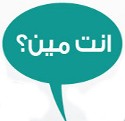
01 - I've been
The Enneagram's structure may look complicated, although it is actually simple. It will help you understand the Enneagram if you sketch it yourself. Draw a circle and mark nine equidistant points on its circumference. Designate each point by a number from one to nine, with nine at the top, for symmetry and by convention. Each point represents one of the nine basic personality types.From one point of view, the Enneagram can be seen as a set of nine distinct personality types, with each number on the Enneagram denoting one type. It is common to find a little of yourself in all nine of the types, although one of them should stand out as being closest to yourself. This is your basic personality type.
Identifying Your Basic Personality Type
As you think about your personality, which of the following nine roles fits you best most of the time? Or, to put it differently, if you were to describe yourself in a few words, which of the following word clusters would come closest?
NB: Keep in mind that these are merely highlights and do not represent the full spectrum of each type.
Type One is principled, purposeful, self-controlled, and perfectionist.
Type Two is generous, demonstrative, people-pleasing, and possessive.
Type Three is adaptable, excelling, driven, and image-conscious.
Type Four is expressive, dramatic, self-absorbed, and temperamental.
Type Five is perceptive, innovative, secretive, and isolated.
Type Six is engaging, responsible, anxious, and suspicious.
Type Seven is spontaneous, versatile, acquisitive, and scattered.
Type Eight is self-confident, decisive, willful, and confrontational.
Type Nine is receptive, reassuring, complacent, and resigned.
The Wings:
No one is a pure personality type: everyone is a unique mixture of his or her basic type and usually one of the two types adjacent to it on the circumference of the Enneagram. One of the two types adjacent to your basic type is called your wing.Your basic type dominates your overall personality, while the wing complements it and adds important, sometimes contradictory, elements to your total personality. Your wing is the "second side" of your personality, and it must be taken into consideration to better understand yourself or someone else. For example, if you are a personality type Nine, you will have likely have either a One-wing or an Eight-wing. Researchers have also encountered some individuals who seem to have both wings, while others are strongly influenced by their basic type and show little of either wing.
Directions of Integration (Growth) and Disintegration (Stress)
The nine personality types of the Enneagram are not static categories they are connected with each others with inner lines. The inner lines of the Enneagram connect the types in a sequence that denotes what each type will do under different conditions. There are two lines connected to each type, and they connect with two other types. One line connects with a type that represents how a person of the first type behaves when they are moving toward health and growth. This is called the Direction of Integration or Growth. The other line goes to another type that represents how the person is likely to act out if they are under increased stress and pressure—when they feel they are not in control of the situation. This second line is called the Direction of Stress or Disintegration. In other words, different situations will evoke different kinds of responses from your personality. You will respond or adapt in different directions, as indicated by the lines of the Enneagram from your basic type.